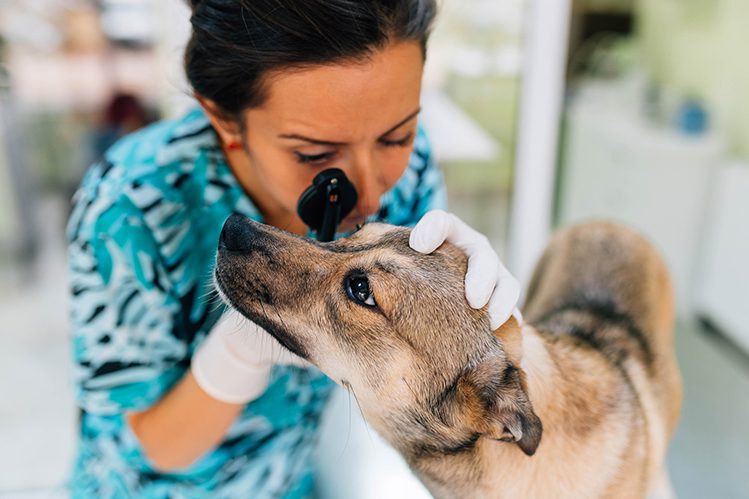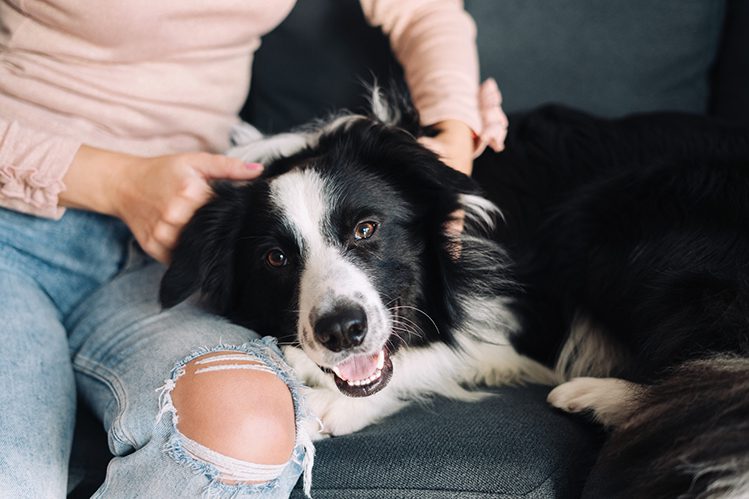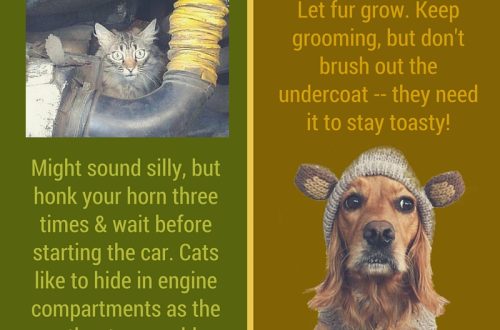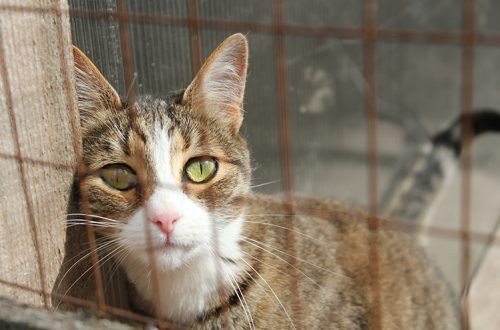
Visual impairment in older dogs
A pet in old age can lead an active life and feel good. But his immunity is no longer as strong as in his younger years. Especially carefully you need to monitor the health of the eyes. We have put together some tips to help you keep your finger on the pulse in this matter.
Dogs of miniature breeds can live up to 20 years. Larger pets live a little less. Whatever breed your pet is, from about seven to eight years old you need to keep his health under special control.
Veterinarians emphasize that the eyes of a dog during the aging period are subjected to great tests. Timely prevention can save your pet from problems with the organs of vision. Feed your pet properly, carry out annual vaccinations, and regularly perform parasite treatments. Show your pet to the veterinarian twice a year, even if there are no complaints.
One of the diseases that gives complications to the organs of vision is the plague of carnivores. A preventive vaccination against it is supposed to be done every year. Another disease (not contagious, but also leading to changes in the eyes) is diabetes, so regular health monitoring through medical examinations is an important point in maintaining eye health in an older dog.
Loss of vision in dogs is possible against the background of brain diseases, when the eyeball is not affected. In such cases, it is necessary to visit a veterinary ophthalmologist. The doctor through the ophthalmoscope will be able to see the condition of the fundus. So you can detect a disease of the retina, which threatens blindness.

Pedigree dogs are more vulnerable to eye diseases. Hereditary diseases are more difficult to treat than diseases that appeared during life on initially healthy organs of vision.
Pay attention to the characteristics of the breed of your four-legged friend. Veterinarians say that owners of spaniels, huskies, Yorkshire terriers, and Labradors turn to them more often than others because of eye problems. Brachycephals (French Bulldog, Pug and other breeds) have bulging eyes, which increases the risk of injury. But belonging to the breed is not a sentence, but a call to more carefully monitor the health of their wards.
The main thing is not to let problems with the eyes of your pets take their course at any age. There are symptoms that signal that the dog needs to be urgently shown to a veterinary ophthalmologist. It:
eye redness,
eyelid edema,
lacrimation
other noticeable discharge from the eyes.
If the pet shows photophobia, the eyes react negatively to light, if the four-legged friend scratches the eye, take him to the doctor without delay.
We list several common ailments of the organs of vision that bother older pets.
- Cataracts are a common eye disease in older dogs. This is a disease of the lens, the biological lens inside the eye. When the lens loses transparency and elasticity, the lens becomes cloudy. This is the cataract. An unnatural brightening of the pupil of the pet will tell you about the onset of the disease, the eye will begin to shine smoky. Such manifestations provoke visual impairment, the pet may be disoriented in space.
Cataract treatment is prescribed exclusively by a doctor, self-administration of drugs can only aggravate the situation. Your veterinarian may prescribe medication to slow down the course of the disease, or refer you for surgery to fully restore your vision. During the operation, the surgeon will replace the biological lens in the dog’s eye with an artificial one.
- Neoplasms in the eye area must be removed while they are small. It is impossible to allow the scar after the removal of a wart on the eyelid to be more than a quarter of a century in length. This can narrow the eye gap and affect the quality of vision.
- In older brachycephals, the secretion of the lacrimal glands decreases, and the palpebral fissure becomes wider due to a decrease in the tone of the eyelids. All this makes the eye vulnerable, without taking the necessary measures, the case may end in dry keratitis. The cornea can be protected with a special moisturizing gel. If it comes to treatment, an operation to reduce the palpebral fissure may be required.
- At a respectable age in dogs, the outer epithelium of the cornea becomes thinner. Against the background of dry eyes, the risk of formation of erosive ulcers of the corneal epithelium increases. This problem is solved surgically, and one of the methods is corneal transplantation.
- Like humans, dogs can experience muscle fiber degeneration with age. This can result in the pupil not rapidly contracting and expanding as the light changes, as it should. Therefore, you should pay attention to the lighting and its differences when you go outside with your dog. Try to avoid your pet in the bright sun.
There are a number of behavioral signs that can help identify vision loss in dogs. If we are talking about a decrease in vision in one eye, then the pet will walk on one side and turn its head unnaturally in order to see everything with the eye with which it sees better. The dog begins to bump into objects, is afraid to be in an unfamiliar place, moves with caution – this may mean that the pet is suffering from progressive blindness.
But even if your pet has lost his sight, with a caring owner, he will be able to continue to lead an almost full life. Hearing, smell, and touch help dogs navigate familiar home environments with ease. Be patient. Older dogs adapt to life with blindness more slowly than younger ones.

If all efforts to restore your pet’s vision have not yielded results, then a few simple rules will help you support your pet and protect it from dangers. Do not let your dog go off-leash, do not let him out into unfenced areas. Your visionless four-legged friend is more vulnerable and will not be able to stand up for himself when meeting enemies. At home, create a safe space, exclude the possibility of a pet falling from a height and being injured on thorny plants, sharp corners of furniture.
We wish your pets health and well-being at any age!





